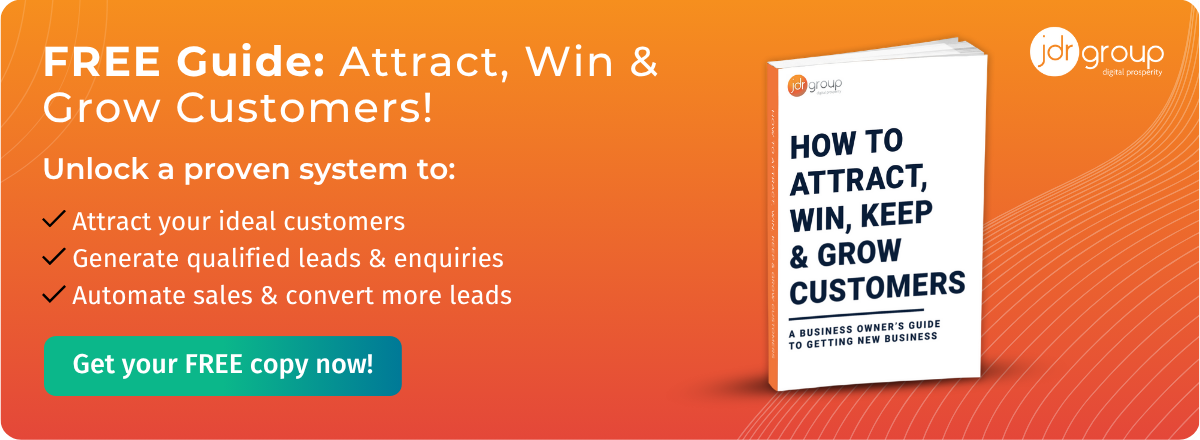How To Properly Follow Up After Meeting With A Prospect

A face-to-face or video sales meeting with a prospect is often the final stage in the sales journey, after which – hopefully – the customer will be ready to close the deal. However, the immediate aftermath of a meeting is also the most nail-biting for businesses, as this is the point at which many promising leads abruptly go cold, no matter how confident you may have felt after the meeting.
What is the best way to follow up with a prospect after a sales meeting?
You want to give your prospect time to discuss the details with their senior team and not come across as too pushy, but you don’t want to be overly ‘hands off’, either, in case there are last-minute questions or concerns that could dissuade them from purchasing.
In this article, we discuss a few best practices for following up with prospects after a sales meeting, to give you the best chance of a successful outcome.
1. Send a prompt follow-up email
It is natural for a prospective customer to experience purchase anxiety immediately after meeting your sales team, and to entertain last-minute doubts – and they could even feel neglected if they don’t hear from you promptly after the meeting. Sending a polite follow-up email after your meeting is an important and simple step you can take to keep your prospects engaged.
Firstly, say thank you and express how much you appreciate their time, and then provide an overview of the key takeaways from the meeting, as well as any additional resources or materials that could be helpful to them. If you’ve discussed a contract or sales agreement, send this straightaway for their perusal, and state in the email when you would like to follow up on any details for confirmation.
2. Follow up with a phone call
Despite the prevalence of email communication, a phone call is still seen as a more personal and intimate step – and after a nurturing process and the face-to-face sales meeting, you’ll probably be on first-name terms. Taking the time to give your prospects a call is, therefore, an important step for maintaining your relationship with them.
Don’t dial their number as soon as you get back to the office – send the email first and follow this up by phone after 2 to 3 business days, or after the weekend if your meeting was on a Friday. Ask about any additional questions or concerns they may have and do your best to answer them in a timely manner. Enquire about the details of the sale without being pushy. If they need time to consider their purchase, that’s fine: ask if they want any more resources or support from you – e.g. more product information or pricing details – and schedule a convenient time to follow up your conversation by phone, face-to-face, or video, in the near future while the meeting is still fresh in their memory.
3. Personalise your follow-up messages
Following your phone call, you may need to communicate by email with your prospect to exchange further information or address more questions that come up. B2B sales, ultimately, come down to personal relationships, so customising your follow-up messages shows that you value your prospect’s time and are genuinely paying attention to their needs. It isn’t sufficient to simply swap out names in a template or treat them like other sales lead in your CRM. From this point forward, all your messages should be 100% bespoke until such time as they either sign on the dotted line or confirm that they are not interested – in which case you will transition them to a different marketing segment in your email database.
If you can, include relevant personal touches such as references to topics that were discussed during the meeting or subsequent calls – if they’ve mentioned an upcoming project they are excited about, new recruitment in the company, or a personal matter such as a holiday, feel free to refer back to this in closing out your emails. They will appreciate personal interest and attention to detail.
4. Send useful resources
Don’t shy away from being completely transparent with prospects you’ve met in person, regarding your sales process, onboarding, and technical details of your products or services. Following up with prospects doesn’t always have to be about pushing a sale. Be proactively helpful and give them as much information as they need to make an informed and unhurried decision. You can send links or documents by email that could provide helpful information, offer them free incentive content, or schedule additional support – e.g. video one-to-ones. In doing so, be responsive to your prospects’ requests and give them as much time as they need to fully digest the information you send.
5. Schedule follow-up meetings
The key to success in sales is making sure that you stay in front of your prospects. Don’t leave the process ‘hanging’ without a scheduled follow-up unless the prospect has confirmed that they are not interested. While some sales may be agreed on the spot, some sales cycles take several meetings over a longer period. After each meeting or touch point, make sure to schedule a confirmed follow-up date so that your prospects remain engaged and informed – and record all communications and meetings in full on your CRM.
Next steps
Keeping in touch with prospects in a structured and professional way following a sales meeting will increase customer satisfaction and loyalty, and also help boost your credibility as a good company to do business with. At JDR, we offer tailored sales support and marketing service to help you maximise your conversion rate and make more sales. To find out more about our services, please call one of our specialists today on 01332 343281.
Image Source: Pexels



